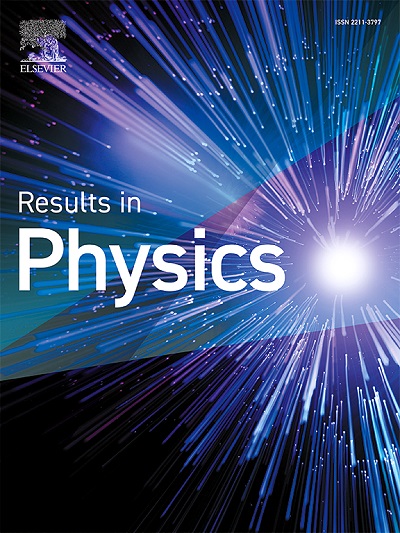DFT and molecular docking analyses of the effects of solvent polarity and temperature on the structural, electronic, and thermodynamic properties of p-coumaric acid: Insights for anti-cancer applications
IF 4.4
2区 物理与天体物理
Q2 MATERIALS SCIENCE, MULTIDISCIPLINARY
引用次数: 0
Abstract
This study investigated the effects of solvent polarity and temperature on the structural, electronic, and thermodynamic properties of p-coumaric acid (p-CA) and its interaction with caffeine, a promising natural phenolic compound for cancer treatment because of its ability to inhibit tumor growth and induce apoptosis. This work investigated the impact of these factors via computational techniques, including semiempirical methods (MP6), Hartree–Fock (HF) calculations with the 6-311++G (d, p) basis set, and density functional theory (DFT) with various basis sets, such as STO-3G*, SDD, 3-21+G*, Aug-CC-pVDZ, 6-31++G (d, p), LANL2DZ, 6-31++G’ (d, p), and 6-311++G (d, p). DFT calculations revealed notable changes in the geometric features of p-CA, including bond angles, dihedral angles, and bond lengths, in both vacuum and water. Furthermore, the results indicated that solvent polarity caused variations in the Fourier transform infrared (FTIR) spectra, absolute and solvation energies, dipole moment, and HOMO–LUMO gap. The thermal analysis also revealed that increasing the temperature from 100 K to 1000 K led to higher enthalpy, heat capacity, and entropy, along with a decrease in Gibbs free energy values due to enhanced molecular vibrations, contributing to the degradation and instability of p-CA. Time-dependent DFT (TDDFT) analysis revealed that solvent polarity influenced UV–Vis absorption and excited-state dipole moments, leading to significant changes in electronic transitions. Additionally, molecular docking studies indicated that p-CA achieved strong binding affinities with various proteins, notably a maximum of −7.5 eV with the 3rts protein; however, the presence of caffeine reduced this binding affinity, suggesting competitive interactions that could diminish its therapeutic effectiveness. These findings underscore the potential of p-CA as an effective anticancer agent, emphasizing the critical roles of solvent, temperature, and molecular interactions in its efficacy.
求助全文
约1分钟内获得全文
求助全文
来源期刊

Results in Physics
MATERIALS SCIENCE, MULTIDISCIPLINARYPHYSIC-PHYSICS, MULTIDISCIPLINARY
CiteScore
8.70
自引率
9.40%
发文量
754
审稿时长
50 days
期刊介绍:
Results in Physics is an open access journal offering authors the opportunity to publish in all fundamental and interdisciplinary areas of physics, materials science, and applied physics. Papers of a theoretical, computational, and experimental nature are all welcome. Results in Physics accepts papers that are scientifically sound, technically correct and provide valuable new knowledge to the physics community. Topics such as three-dimensional flow and magnetohydrodynamics are not within the scope of Results in Physics.
Results in Physics welcomes three types of papers:
1. Full research papers
2. Microarticles: very short papers, no longer than two pages. They may consist of a single, but well-described piece of information, such as:
- Data and/or a plot plus a description
- Description of a new method or instrumentation
- Negative results
- Concept or design study
3. Letters to the Editor: Letters discussing a recent article published in Results in Physics are welcome. These are objective, constructive, or educational critiques of papers published in Results in Physics. Accepted letters will be sent to the author of the original paper for a response. Each letter and response is published together. Letters should be received within 8 weeks of the article''s publication. They should not exceed 750 words of text and 10 references.
 求助内容:
求助内容: 应助结果提醒方式:
应助结果提醒方式:


